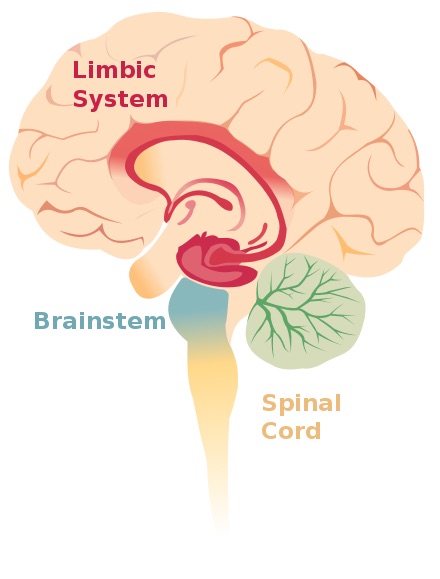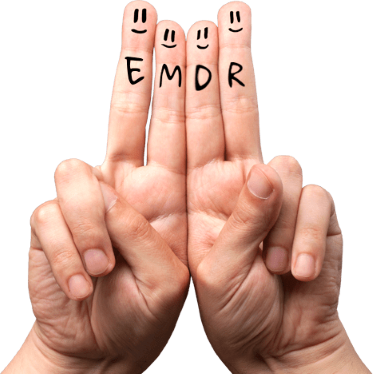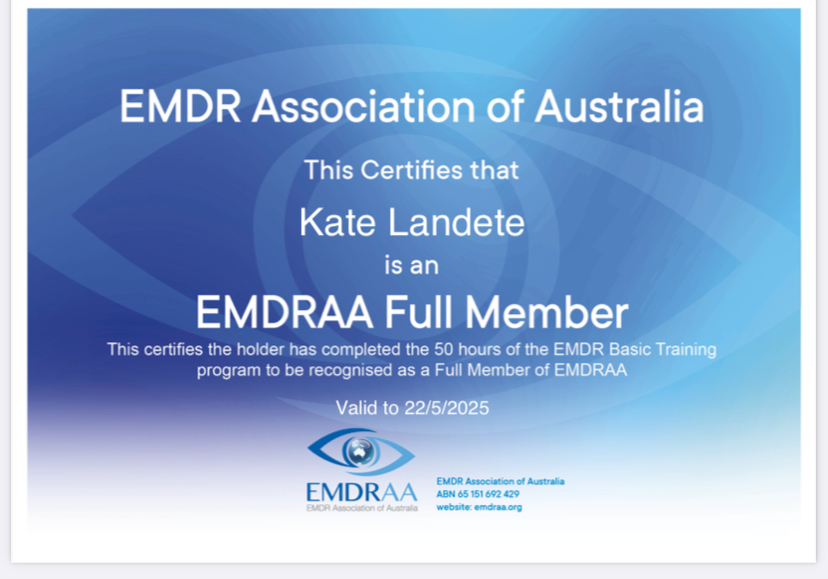What is EMDR?

EMDR stands for Eye Movement Desensitisation and Reprocessing. The mind can often heal itself naturally, in the same way as the body does. Much of this natural coping mechanism occurs during sleep, particularly during rapid eye movement (REM) sleep. Francine Shapiro developed Eye Movement Desensitisation and Reprocessing (EMDR) in the 1980’s utilising this natural process in order to successfully treat Post-traumatic Stress Disorder (PTSD). Since then, EMDR has emerged as a leading treatment used to effectively treat trauma, anxiety and a wide range of other mental health challenges. Unlike traditional talk therapy, EMDR delves deeper, targeting the roots of distressing experiences to facilitate lasting healing.
What happens when you are traumatised?
Most of the time your body routinely manages new information and experiences without you being aware of it. However, when something out of the ordinary occurs and you are traumatised by an overwhelming event (e.g. a car accident) or by being repeatedly subjected to distress (e.g. childhood neglect), your natural coping mechanism can become overloaded.

This overloading can result in disturbing experiences remaining frozen in your brain or being “unprocessed”. Such unprocessed memories and feelings are stored in the limbic system of your brain in a “raw” and emotional form, rather than in a verbal “story” mode. This limbic system maintains traumatic memories in an isolated memory network that is associated with emotions and physical sensations, and which are disconnected from the brain’s cortex where we use language to store memories. The limbic system’s traumatic memories can be continually triggered when you experience events similar to the difficult experiences you Brainstem have been through. Often the memory itself is long forgotten, but the painful feelings such as anxiety, panic, anger or despair are continually triggered in the present. Your ability to live in the present and learn from new experiences can therefore become inhibited.
How Does EMDR Work?
At its core, EMDR is grounded in the brain’s innate capacity to heal itself. Traumatic events, large or small, can become “stuck” in our minds, causing distressing symptoms to persist long after the event has passed. EMDR helps unstick these memories by engaging the brain’s natural processing mechanisms. EMDR utilises the natural healing ability of your body. After a thorough assessment, you will work closely with a trained therapist and be asked specific questions to identify target memories or experiences that are contributing to your distress. You’ll then engage in bilateral stimulation (typically through eye movements and watching your therapists fingers moving backwards and forwards across your visual field, sounds, or taps) while recalling these memories. This bilateral stimulation mimics the rapid eye movement (REM) sleep phase, where processing and integration of experiences occur naturally.
The eye movements will last for a short while and then stop. You will then be asked to report back on the experiences you have had during each of these sets of eye movements. Experiences during a session may include changes in thoughts, images and feelings. With repeated sets of eye movements, the memory tends to change in such a way that it loses its painful intensity and simply becomes a neutral memory of an event in the past. Other associated memories may also heal at the same time. This linking of related memories can lead to a dramatic and rapid improvement in many aspects of your life.
- Initial Assessment: We’ll begin with an initial assessment session to explore your reasons for seeking therapy, assess your readiness for EMDR, and discuss any questions or concerns you may have. This session is an opportunity for us to establish rapport and ensure that EMDR is the right fit for you.
- Creating a Treatment Plan: Together, we’ll develop a treatment plan tailored to your specific needs and goals. We’ll identify target memories or experiences to focus on during EMDR sessions and discuss the potential benefits and outcomes of the therapy.
- Preparing for EMDR: Before starting EMDR, we’ll spend time preparing and building resources to ensure that you feel safe and supported throughout the process. This may involve teaching relaxation techniques, grounding exercises, and other coping skills to help you manage any distress that may arise during sessions.
- Understanding the Process: During EMDR sessions, you’ll be guided to recall distressing memories while simultaneously engaging in bilateral stimulation, such as following the therapist’s finger movements with your eyes or listening to alternating sounds. This process helps facilitate the reprocessing and integration of traumatic memories.
- Navigating Emotions: As you engage in EMDR, you may experience a range of emotions, sensations, and insights. It’s normal to feel a temporary increase in distress before experiencing relief as the therapy progresses. I’ll be here to provide support and guidance as you navigate these emotions.
- Monitoring Progress: Throughout the course of EMDR therapy, we’ll regularly assess your progress and make adjustments to the treatment plan as needed. Your feedback is invaluable in guiding the direction of our work together and ensuring that you’re getting the most out of the therapy.
- Integration and Closure: As you work through targeted memories and experiences, you’ll begin to experience shifts in your thoughts, feelings, and behaviors. We’ll work together to integrate these changes into your daily life and prepare for closure as you reach your therapy goals.

How Can EMDR Help People?
The transformative potential of EMDR extends far beyond its origins in trauma therapy. EMDR has been successfully used to treat:
• anxiety and panic attacks • depression • stress
• phobias • sleep problems • complicated grief
• addictions • pain relief and phantom limb pain
• self-esteem and performance anxiety
The Benefits of EMDR
- Lasting Results: EMDR often yields rapid and enduring relief from symptoms, allowing individuals to reclaim their lives and move forward with renewed clarity and purpose.
- Non-Invasive: Unlike some forms of therapy that require extensive verbal processing, EMDR can achieve profound results with minimal verbal disclosure, making it suitable for individuals who struggle to articulate their experiences.
- Empowerment: EMDR empowers individuals to take an active role in their healing journey, providing them with tools and techniques they can use to manage distressing symptoms outside of therapy sessions.
- Enhanced Self-Understanding: Through EMDR, individuals gain insights into their thought patterns, behaviors, and emotional responses, fostering greater self-awareness and self-compassion.
- Trauma resolution (EMDR facilitates the reprocessing of traumatic memories, reducing their emotional charge and empowering individuals to move forward with greater resilience)
Can anyone benefit from EMDR?
EMDR can accelerate therapy by resolving the impact of your past traumas and allowing you to live more fully in the present. It is not, however, appropriate for everyone. The process is rapid, and any disturbing experiences, if they occur at all, last for a comparatively short period of time. Nevertheless, you need to be aware of, and willing to experience, the strong feelings and disturbing thoughts, which sometimes occur during sessions.
How long does treatment take?
EMDR can be brief focused treatment or part of a longer psychotherapy program.EMDR sessions can be for 60 to 90 minute
Will I will remain in control and empowered?
During EMDR treatment, you will remain in control, fully alert and wide-awake. This is not a form of hypnosis and you can stop the process at any time. Throughout the session, the therapist will support and facilitate your own self-healing and intervene as little as possible. Reprocessing is usually experienced as something that happens spontaneously, and new connections and insights are felt to arise quite naturally from within. As a result, most people experience EMDR as being a natural and very empowering therapy.
What evidence is there that EMDR is a successful treatment?
EMDR is an innovative clinical treatment which has successfully helped over a million individuals. The validity and reliability of EMDR has been established by rigorous research. There are now nineteen controlled studies into EMDR making it the most thoroughly researched method used in the treatment of trauma, (Details on www.emdr-europe.org and www.emdr.org) and is recommended by the National Institute for Health and Clinical
*** Information adapted from www.thetraumacentre.com and www.getselfhelp.co.uk
Kate Landete is an Accredited EMDR Practitioner and is a current, full member of EMDRAA.

For more information :
EMDR Australian Association Website – https://emdraa.org/
